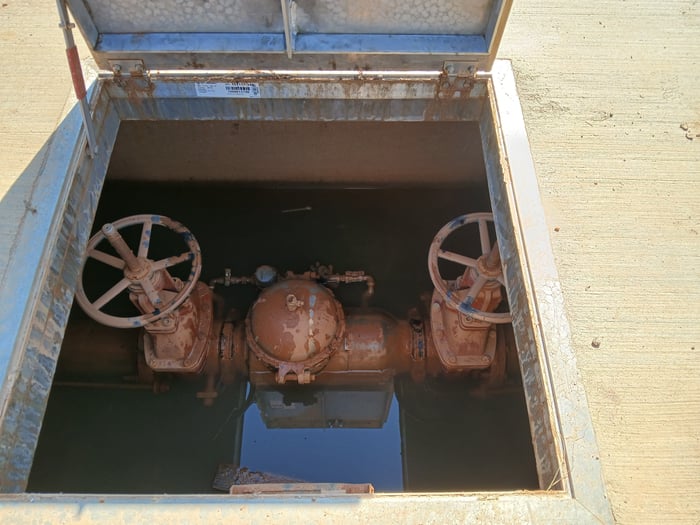There’s a growing desire to install above-ground backflow enclosures, and with good reason. These enclosures are safer, more efficient and more cost-effective than underground vaults. Even so, many designers still fail to realize the benefits.
Why? Because most water jurisdictions don’t have standard aluminum enclosures or standard details in place for this type of design. That’s changing fast.
When standard size and installation details aren’t available, many design engineers are tempted to default to what they know: underground vaults. Since the backflow prevention system is just one small part of a larger plumbing system, engineers often don’t take the time to explore alternatives like above-ground marine grade aluminum enclosures able to withstand harsh conditions and protect backflow systems.
Backflow Preventers Protect Water Systems
The core function of a backflow preventer is simple: to protect the public water supply and ensure clean water flows in one direction.
These essential devices are installed on domestic water lines, fire lines and irrigation systems — anywhere cross-connection or contamination might occur.
Without a backflow prevention device, pressure vacuum breakers, riser pipes and other components could become susceptible to contamination, debris or even flooding. The result is a compromised water supply. In short, backflow preventers are vital for any building or system that handles valuable materials or clean water.
Unfortunately, traditional underground vaults expose these systems to a host of problems. Flooding, corrosion and freezing temperatures can cause serious damage to backflow preventers and pipes, leading to expensive repairs or replacements. Vaults can even create the grounds for cross-connection, increasing the risk of contamination.
If the objective is to develop and implement cross-connection control programs to safeguard public drinking water, why does the industry continue to allow underground vaults?

USC Supports Installing Backflow Preventers Above Ground
The University of Southern California Foundation for Cross-Connection Control and Hydraulic Research has long recommended installing backflow systems above-grade. Their reasoning is clear: underground enclosures are unsafe and compromise public water systems.
In multiple publications, USC has warned that below-grade installations are at risk of flooding, rust and corrosion. Once water, silt or mud fills a vault, the backflow device becomes submerged, creating a direct cross-connection.
They write, "The water in the pit could create a cross-connection between the water in the pit and the backflow preventer through the test cocks. This may occur whether the test cocks are opened or closed."
To provide protection from these risks, USC recommends enclosure designs that include:
-
Climate control
-
Insulation for freeze protection
-
A locking mechanism to enhance security and prevent vandalism
-
Installing DC and RPZ assemblies 12” to 36” above grade, behind landscaping or architectural screens if needed for aesthetics
Designing your backflow preventer installation in a vault is risky. It increases the chance your backflow assemblies will end up underwater and covered in a layer of grime — including the test cocks. Meanwhile, aluminum enclosures create a safe, durable and compliant environment for your equipment while offering easy access for testing and repairs.
Industry Agrees: Backflow Enclosures Are Needed
Safe-T-Cover representatives meet regularly with water jurisdictions to present the evidence and help raise the standard for above ground enclosures. We know the industry is aware of the risk.
We polled more than 1,200 professionals from civil engineering firms across the United States, and found that 74 percent agreed or strongly agreed that “the local water guidelines for commercial and industrial construction lack needed standard details for above-ground backflow preventer installation."
Protect Your System With Free Standard Details Designs
If you're now aware of the need to make a change, we've got the tools to help you join the thousands who have decided to think outside the vault.
Our free guide gives you everything you need to know to include in your standard details, along with five free CAD files for common backflow enclosure situations. Download and edit them for your next project.
Grab the Standard Details for Above-Ground Enclosures Guide to get started.




